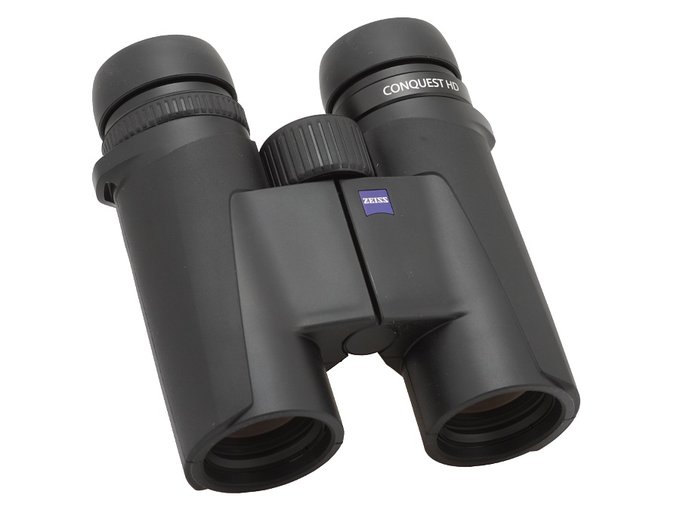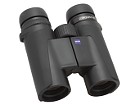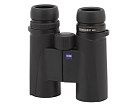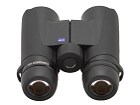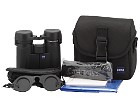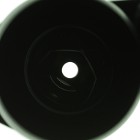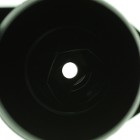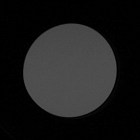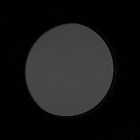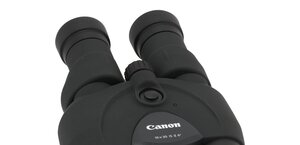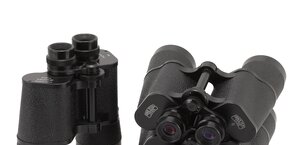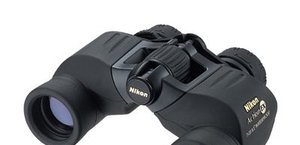Carl Zeiss Conquest HD 8x32
In January 2012 a refreshed Conquest series was shown on the market with HD letters in their names; its production was moved back to Germany. 8x42 and 10x42 models were launched as the first, then 8x32 and 10x32 joined them and finally they launched 8x56 ,10x56 and 15x56 models.
Binoculars from that series are supposed to have a special optical system marked as HD which, combined with antireflection T* coatings, allegedly guarantees bright and properly contrasted images. The producer emphasizes the fact that the overall transmission of a pair of binoculars should reach 90% even though weaker Schmidt-Pechan prisms are used inside ( Abbe-Koenig prisms, which are better, can be found in the low light models with an objective lens of 56 mm).
The Conquest HD series binoculars boast LotuTec water shedding outer coatings for all weather use and easier cleaning; they are also nitrogen-filled, fully armored and waterproof up to 5 meters. They can be used in temperatures ranging from -20 to +63 degrees Centigrade.
Buyers get a rainguard and lens cups, a strap and a hard case with a strap of its own in the box. The product comes with a 10-year guarantee period.
| Magnification | Lens diameter | Angular field of view | Prisms | Eye relief | Weight | Price |
|---|---|---|---|---|---|---|
| 8 | 32 | 140/1000(8o) | BaK-4/roof | 16 mm | 630 g | 3600 PLN |
Summary
Pros:
- solid casing of good quality,
- sensible transmission,
- excellent astigmatism correction,
- lack of problems with chromatic aberration,
- low coma,
- wide field of view,
- slight brightness loss on the edge of the field,
- good colour reindition,
- dark area near the exit pupil,
- proper darkening of the interior of the tubes,
- good quality prisms made of BaK-4 glass,
- efficient anti-reflection coatings,
- sharp image already from 1.4 metres.
Cons:
- truncated pupils.
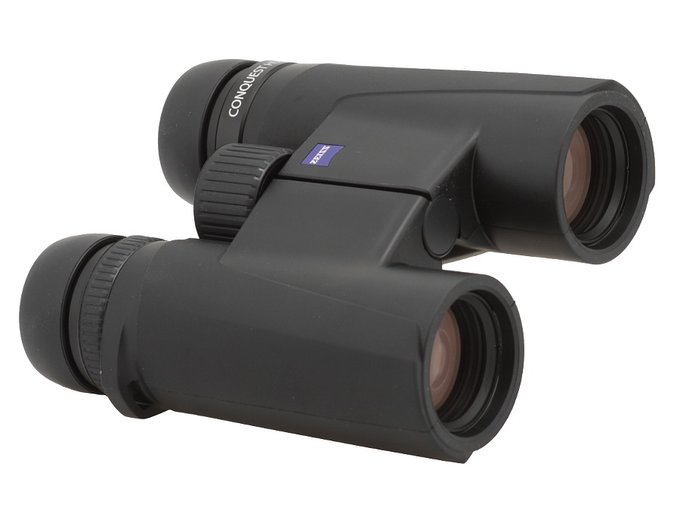 |
One glance at the parameters of the tested Conquest HD 8x32 (especially its wide field of view) and its result in our test and you know everything you need to know about that device.
Some very strong competitors the Zeiss might find among top-of-the-range pairs of binoculars produced in Japan. For roughly the same amount of money you can buy the Nikon HG 8x32, the Leupold Golden Ring 8x32 HD (unfortunately already unavailable) and the Alpen Ranier 8x32. Still in each cases the Zeiss is able to present something more. It is physically lighter and comes with a wider field of view than the Nikon. The Leupold would be a very serious opponent but it is already unavailable; the Alpen comes with the same field of view but is heavier. Apart from that the tradition and renown of the Zeiss brand name cannot be ignored too. Many people choose Zeiss only because they would actually prefer wearing a piece of equipment with the logo of that German producer rather than an Alpen or Leupold set of binoculars even though those can be bought for roughly the same amount of money.
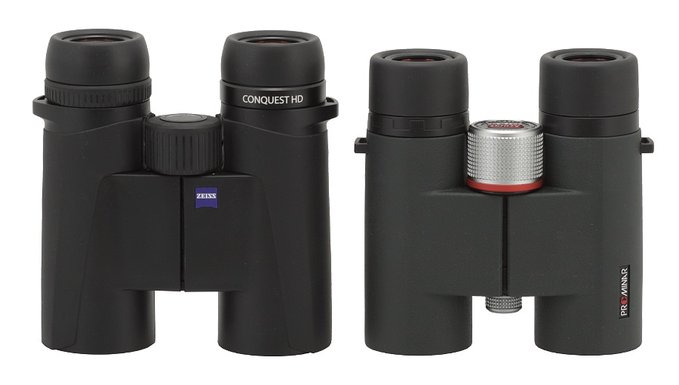 Zeiss Conquest HD 8x32 and Kowa BD 8x32 XD Prominar |
It’s worth noticing that the level of 130 points has been gnawed at more and more often by the best pairs of binoculars produced in China. That’s why the Zeiss should also prepare for competing with such devices like the Kowa BD 8x32 XD Prominar or the Vanguard Endeavor ED II 8x32. Still the price might be crucial here as Chinese products are significantly cheaper and for many buyers 500 Euro constitute an impassable limit and an absolute maximum of what they are prepared to spend on a set of binoculars.
Anyway the result of the Conquest HD 8x32 would have been outstanding if not for one slip-up we simply have to write about. Such truncated exit pupils ill befit such a renowned producer – what a disgrace!
Still we wouldn’t like to end this test on a pessimistic note; the tested Zeiss product, doesn’t deserve it at all. In my opinion the whole Conquest HD series is actually a great idea – for a quite sensible price you get devices which are hardly worse than the previous top-of-the-range Victory FL series and can compete successfully even with Ultravids or EL-series binoculars manufactured by Swarovski.
Attention! In this test the transmission value has been measured only for two wavelengths: 532 nm (green) and 657 nm (red) with a margin of error never exceeding 1%. Four measurements have been taken for each optical path and the results have been averaged out.





